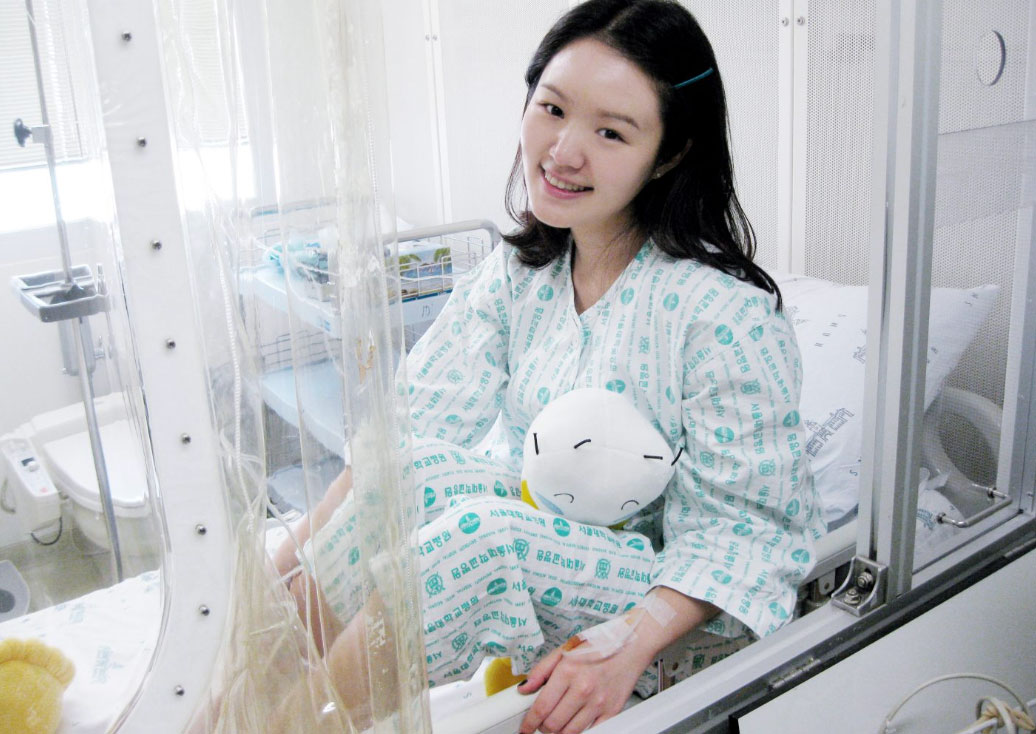What is blood stem cell transplantation?
Every year, thousands of patients around the world are diagnosed with leukaemia and other blood-related diseases. In the past, this diagnosis was often fatal. Today, a blood stem cell transplant can be a potentially life-saving treatment for more than 70 different diseases. A blood stem cell transplant replaces a person’s defective stem cells with healthy ones. More than 50,000 patients worldwide receive transplants every year, and this number continues to rise.
Sadly, many patients who could benefit from this life-saving procedure do not get the treatment they so desperately need – because finding a donor with a similar tissue type is no easy task. In around one-third of cases, a donor can be found within a patient’s family. But the rest of the time, an unrelated donor is required for successful transplantation.

Who needs blood stem cell transplantations?
If a person has a disease or condition that prevents the body from making enough healthy blood cells, they may need a blood stem cell transplant. These diseases and conditions include: leukaemia, lymphoma, thalassemia, aplastic anaemia, sickle cell anaemia, severe combined immunodeficiency syndrome, myelodysplastic syndromes, congenital neutropenia and chronic granulomatous disease.
What are blood stem cells?
Blood stem cells are found in bone marrow. They are precursor cells which can develop into any of three major types of blood cells:
- White blood cells (leukocytes) protect us against infections. They encourage invading pathogens such as bacteria and viruses and then destroy them.
- Red blood cells (erythrocytes) are involved in blood clotting.
- Platelets (thrombocytes) help form a clot that seals and heals wounds.

What is blood stem cell transplantation?
A blood stem cell transplantation is a procedure that replaces a patient’s defective stem cells with healthy ones. Blood stem cells are mostly found in the bone marrow, a spongy tissue inside the bones. Small numbers of stem cells also are found in the blood and in the umbilical cord (the cord that connects a foetus to its mother’s placenta). Stem cells develop into the three types of blood cells that the body needs:
- Red blood cells, which carry oxygen throughout the body
- White blood cells, that fight infections
- Platelets, that help the blood to clot
Bone marrow
(collected from the pelvis) The pelvis contains the largest number of blood stem cells. For this reason, cells from the cavity in the pelvic bone are used for a bone marrow donation.
Peripheral blood
(collected from the blood stream) Normally, only very few stem cells are found in the blood. Hormone-like substances called growth factors can be given to blood stem cell donors a few days before the collection. This causes their blood stem cells to grow faster and to move from the bone marrow into the blood stream. Peripheral blood is collected from adult donors.
Umbilical cord blood
(collected from the placenta and umbilical cord) After a baby is born, the blood that is left behind in the placenta and umbilical cord (known as cord blood) can be collected. It is then frozen and stored until required for transplantation.